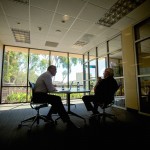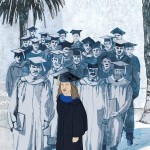This is the second installment of a ten part series by Dr. Scott Sunquist on what trends in missiology we can expect in the coming years.
Trend #1: Technology
By Dr. Scott W. Sunquist
The past two centuries have been dominated by the use of new discoveries and inventions for the sake of mission. The discovery of germs and their relationship to disease in the 1860s increased the value of medical missions. Clinics, nurses training, surgery and vaccination all were added to the “normal” missionary practices in the later part of the 19th century and continue today. About the same time the more rapid forms of transportation (and spread of European empires) opened up new areas for Christian mission. In the 20th century newer technologies of radio began to be used by evangelists like Charles E. Fuller (first broadcast was 1929) and for overseas missionary outreach (HCJB, “Voice of the Andes” founded 1931, and Far East Broadcasting Company—FEBC—founded 1945, among others). Many of these were criticized by the Christian west until we began to hear stories of villages and cities that were reached by the Gospel where no missionary had visited. Radio has connected the heart of God, through the heart language of local peoples, to the heart of the unreached.

Today and in the future, computer and satellite technologies will prove to be more and more significant. Technological communications will not be stopped by governments or armies. Satellite and internet connectivity, like urban rats or raccoons, adapt and continue to thrive, bringing both the most excellent and most evil of human life. In terms of mission, Iranian pastors receive a thorough theological education through satellite courses taught from most anywhere in the world. The same is true for Arab and Indian classes and broadcasts. When countries and local religious rulers are oppressive, denying basic freedoms, local people will search for more. Many are finding more through the internet (often a smart phone is all they need) and through satellite programs. Training courses and Bibles (along with multiple translations are all found on cellular phones.
Technology can and should make it more common for global community classes to be held so students from Muslim West Africa and Egypt and Turkey, and Malaysia can study Christian witness in Islamic contexts together. Ministry to migrants from Syria can be provided by a community class or ministry class with pastors and missionaries from Germany, Greece, Boston and Orange County, California. This is not just an interesting possibility, but it is important to pursue this since mission is from everywhere to everywhere, provided by ubiquitous technological connectivity.
Dr. Scott W. Sunquist is the dean of the School of Intercultural Studies and professor of World Christianity at Fuller Theological Seminary.
This blog post was taken from The State of Missiology Today by Charles E. Van Engen. Copyright (c) 2016 by Charles E. Van Engen. Used by permission of InterVarsity Press, P.O. Box 1400, Downers Grove, IL 60515-1426.www.ivpress.com. Pre-order the full book here (expected October 2016).
Follow Fuller Seminary on Twitter: @fullerseminary
Follow Fuller’s School of Intercultural Studies on Twitter: @fuller_sis












